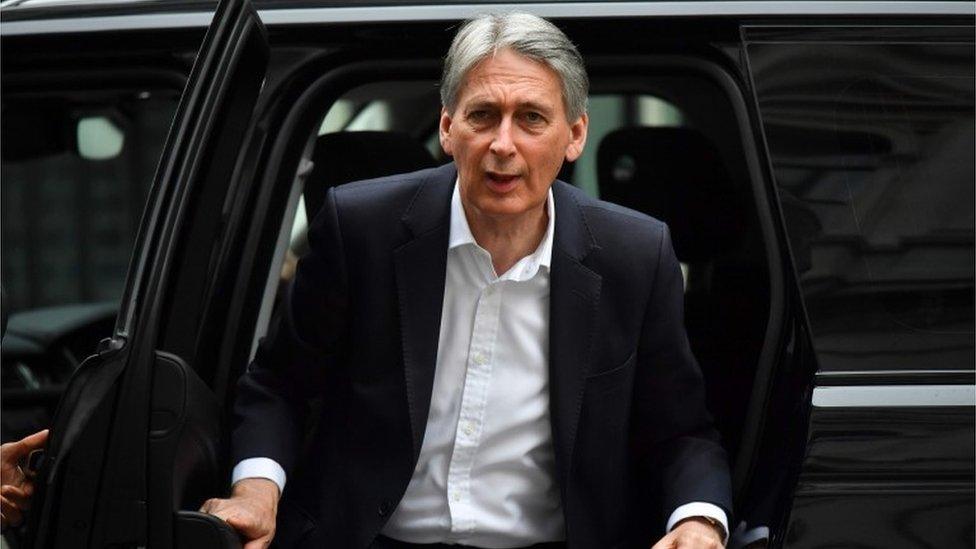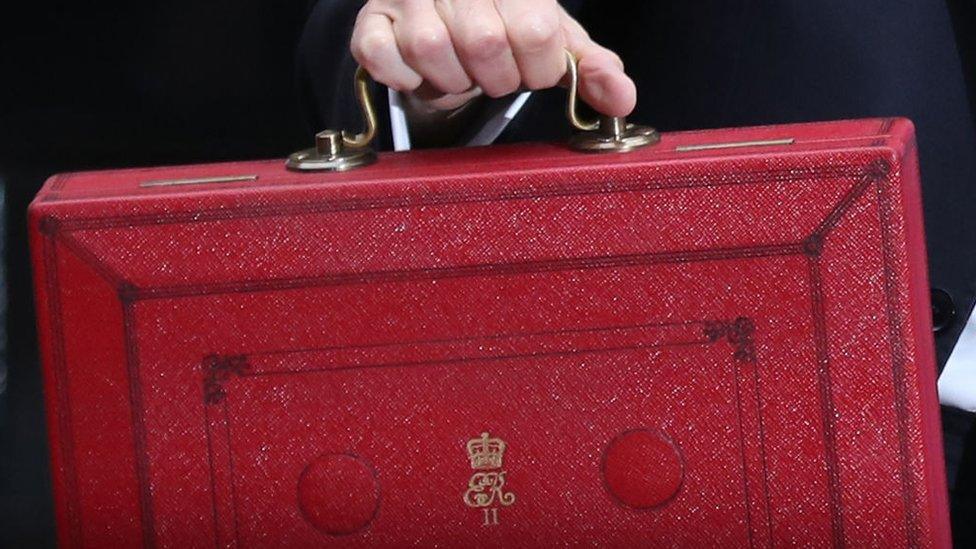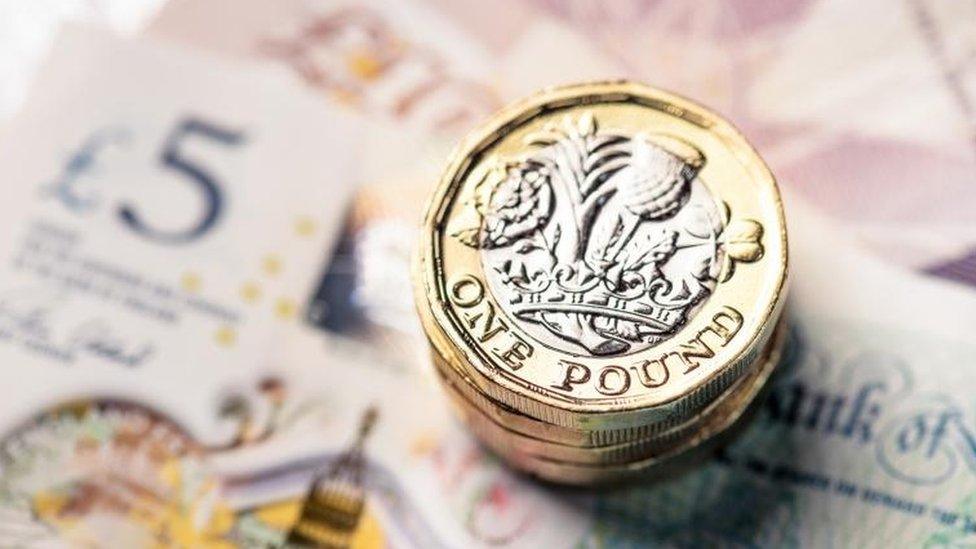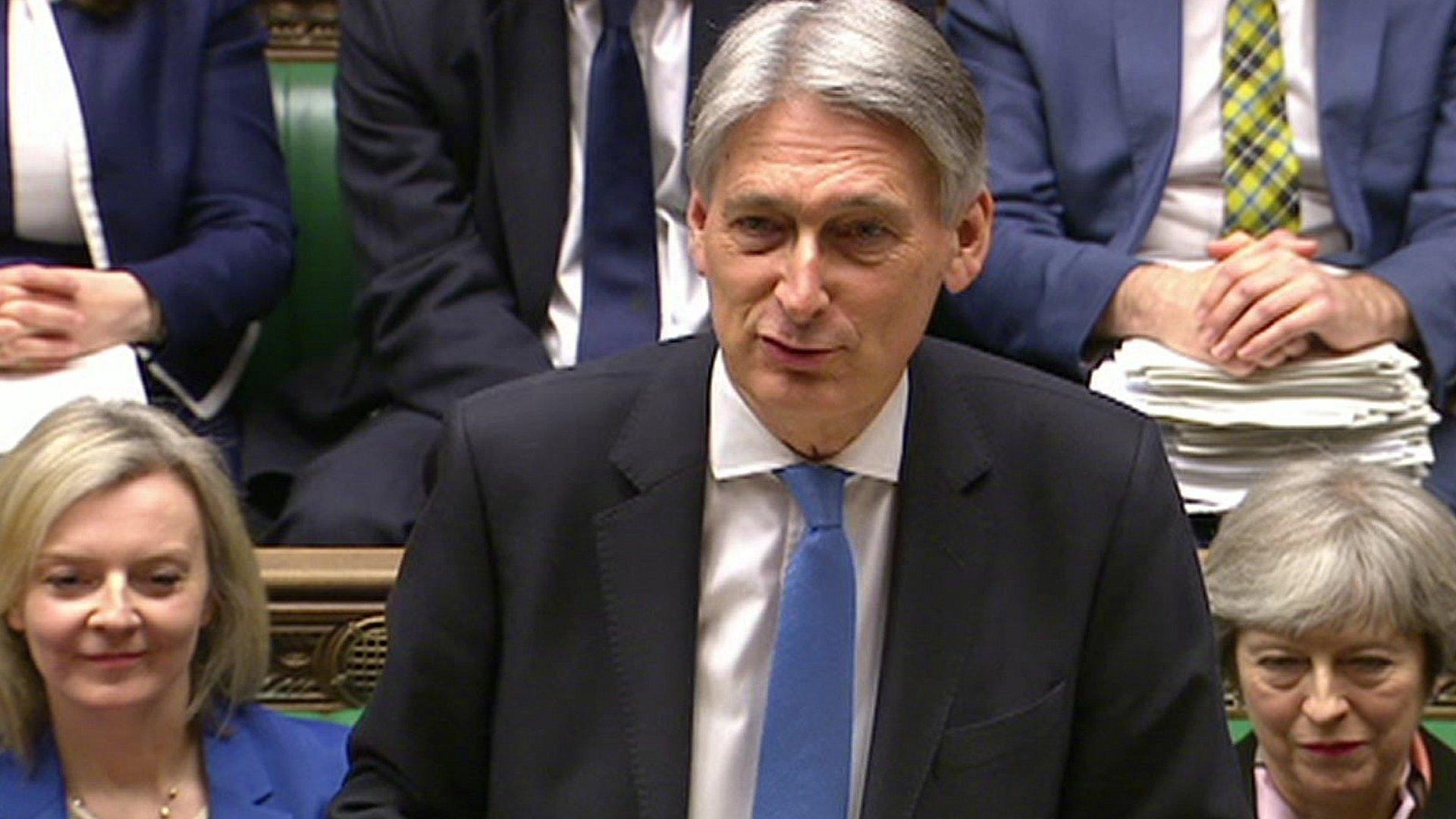Mr Hammond’s big test on borrowing
- Published
- comments

The amount the government borrows is at its lowest level since 2007.
The current budget - the amount the government spends on day-to-day operations - is actually in surplus, albeit by a wafer thin amount.
That's the first time that has happened since 2002 and the era of Gordon Brown.
Tax receipts are at record levels as the number of people employed remains high.
Philip Hammond welcomed the news - his target is to eliminate the deficit by the middle of the next decade.
But the chancellor also knows that a lower deficit creates its own challenges.
And a test for the type of politician he is.
The figures will increase calls for the Treasury to signal a significant increase in public spending at the Autumn Budget - with the NHS in England and Wales the priority.
That is something Mr Hammond signalled he would do at the Spring Statement last month, if the deficit was below target.
Which it now is.

The chancellor will be under pressure to increase spending
But many in the Treasury believe that now is not the time to turn on the spending taps and that the focus should remain on reducing the deficit.
Particularly while the economic headwinds of a sluggish economy and possible Brexit risk remain.
The growth figure for the first three months of the year will be published on Friday.
And many economists expect it to be relatively poor given the dampening effects of the Beast from the East blizzards which kept consumers at home.
When thick snow affected large parts of Britain in the winter of 2010, the Office for National Statistics initially estimated it might have knocked as much as 0.5% from gross domestic product, the amount the economy produces.
Now, that was a very negative effect (it was over the important Christmas spending period) and few are expecting such a downturn this time.
But, the significant question still remains. How much economic "headroom" does the chancellor want to create in the public finances compared with the government's own deficit elimination targets?
Fork in the road
Meanwhile, the headlines are full of calls for more funding for many public services.
And Labour is arguing that now is not the time for more austerity.
This is the fork in the road the Treasury now faces.
And the battle over which route to take - the hawks of restraint and caution versus the doves pushing higher levels of spending - will be a defining one of the year, both economically and politically.
Yes, today's borrowing figures have created some wriggle room.
It remains to be seen whether Mr Hammond is the type of chancellor who wants to use it.
- Published24 April 2018

- Published18 April 2018

- Published13 March 2018
